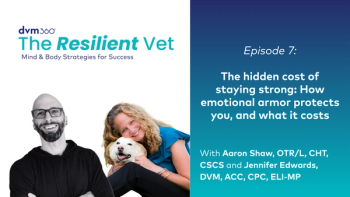
Preventing and treating foot rot in cattle (Proceedings)
Foot rot (interdigital phlegmon, foot abscess, foul-in-the-foot, infectious pododermatitis, interdigital necrobacillosis) is an infection of the interdigital tissue of cattle caused by Fusobacterium necrophorum and Prevotella melaninogenicus or Porphyromonas levii.
Foot rot (interdigital phlegmon, foot abscess, foul-in-the-foot, infectious pododermatitis, interdigital necrobacillosis) is an infection of the interdigital tissue of cattle caused by Fusobacterium necrophorum and Prevotella melaninogenicus (formerly Bacteroides melaninogenicus) or Porphyromonas levii (formerly Bacteroides nodosus). Conditions that predispose to foot rot include: mud, trauma to the interdigital area (stubble, gravel, and rough ground), high heat, high humidity, and poor housing conditions (manure). The organisms are continually present in the environment of cattle as F. necrophorum and Prevotella species are rumen microbes and escape the GI tract easily. Fusobacterium necrophorum is also the cause of liver abscesses in cattle on concentrate diets.
Because these pathogens are ubiquitous in the environment of cattle, any circumstance that abrades, scarifies, or punctures the interdigital space can introduce these anaerobic bacteria. Fusobacterium necrophorum has a potent leucotoxin (exotoxin) that promotes necrosis and compromises leucocytes. The bacteria produce additional anaerobic areas that create a larger lesion.
The foot rot lesions are typical and diagnosis is made on visual assessment of the animal. The location of the lesion can vary: most on the anterior aspect of the interdigital region, some between the claws entirely, and others on the posterior aspect of the foot in the interdigital region. There is a typical odor associated with foot rot lesions. Many lay people consider that every lame animal has foot rot and that one course of antibiotic therapy is adequate treatment. Both assumptions are incorrect and education of producers is an important part of disease control for this condition. Treatment is most always successful if implemented early in the clinical course. Procaine penicillin G (22,000 to 44,000 IU/kg) subcutaneously or intramuscularly works very well as does oxytetracycline (10 mg/kg) subcutaneously. It is important to follow all withdrawal time recommendation, prescription procedures, and beef quality assurance guidelines when initiating therapy or advising clients. Treatment delays or failures can result in infection of deeper tissues such as the tendon sheaths, ligaments, and bones of the foot. Successful treatment of these advanced cases can be challenging or unsuccessful.
Prevention is the most effective way to deal with this disease. There are commercial vaccines available which can decrease the number of cases or the severity; however, they are not universally effective. Keeping the environment clean, dry, and free of damaging objects (gravel, etc) is important in dairies and confined feeding operations. However, this is very difficult to accomplish in most grazing situations.
There are two minerals that may be or primary importance in the prevention of foot rot, iodine and zinc. Both have proven some efficacy in research trials. Lack of iodine in grazing cattle diets has been associated with goiter, woody tongue (Actinobacillosis), lumpy jaw (Actinomycosis), cervical abscesses, and foot rot. Supplemental iodine has been shown to prevent experimental foot rot1 and naturally occurring foot rot in beef cattle. For foot rot prevention, 20-25 mg/head/day of EDDI is usually adequate.3 Iodine can be supplemented in trace mineral formulations in total mixed rations, salt-mineral mixes for grazing animals, molasses based formulations, and other methods. Common supplements include sodium iodide, calcium iodate, and EDDI (ethylenediamine dihydriodide; organic iodide). For dairy cattle there is a milk action limit of 500 ppb in the milk. The FDA regulates the use of EDDI and a limit of 500 mg per day is in force—the previous limit was 10 mg per head per day. Zinc in the form of zinc methionine (Zinpro®) has been reported to be of value in preventing foot rot in beef feedlot situations and this may be a difference between grazing operations and feedlots. Additionally, my clinical experience has been that cattle deficient in either copper or selenium can have marked increases in the severity and incidence of foot rot. Therefore, it is important to address the status of these two trace minerals when dealing with foot rot prevention.
References
1. Berg JN, Maas, JP, Paterson, JA, Krause, GF, and Davis, LE. Efficacy of ethylenediamine dihydriodide as an agent to prevent experimentally-induced bovine foot rot. Am J Vet Res, 45:1073-1078, 1984.
2. Maas, J, Davis, LE, Hempstead, C, Berg, JN, and Hoffman, KA. Efficacy of ethylenediamine dihydriodide (EDDI) in the prevention of naturally-occurring foot rot in cattle. Am J Vet Res, 45:2347-2350, 1984.
3. Maas, J, Berg, JN, and Petersen, RG. Serum distribution of iodine after oral administration of ethylenediamine dihydriodide in cattle. Am J Vet Res, 50:1758-1759, 1989.
Newsletter
From exam room tips to practice management insights, get trusted veterinary news delivered straight to your inbox—subscribe to dvm360.




